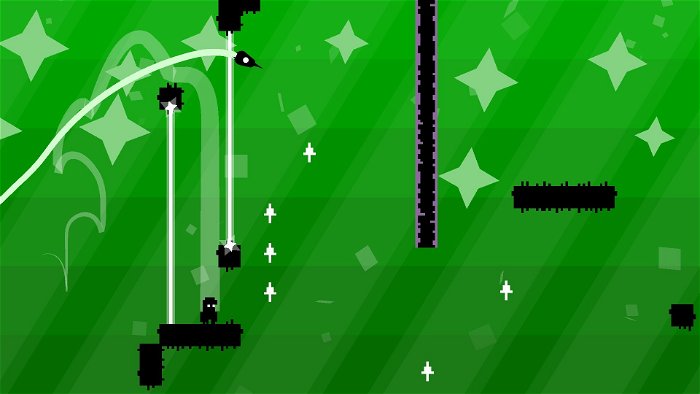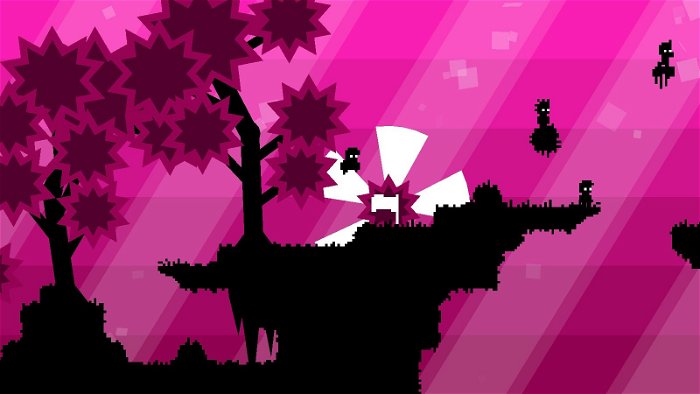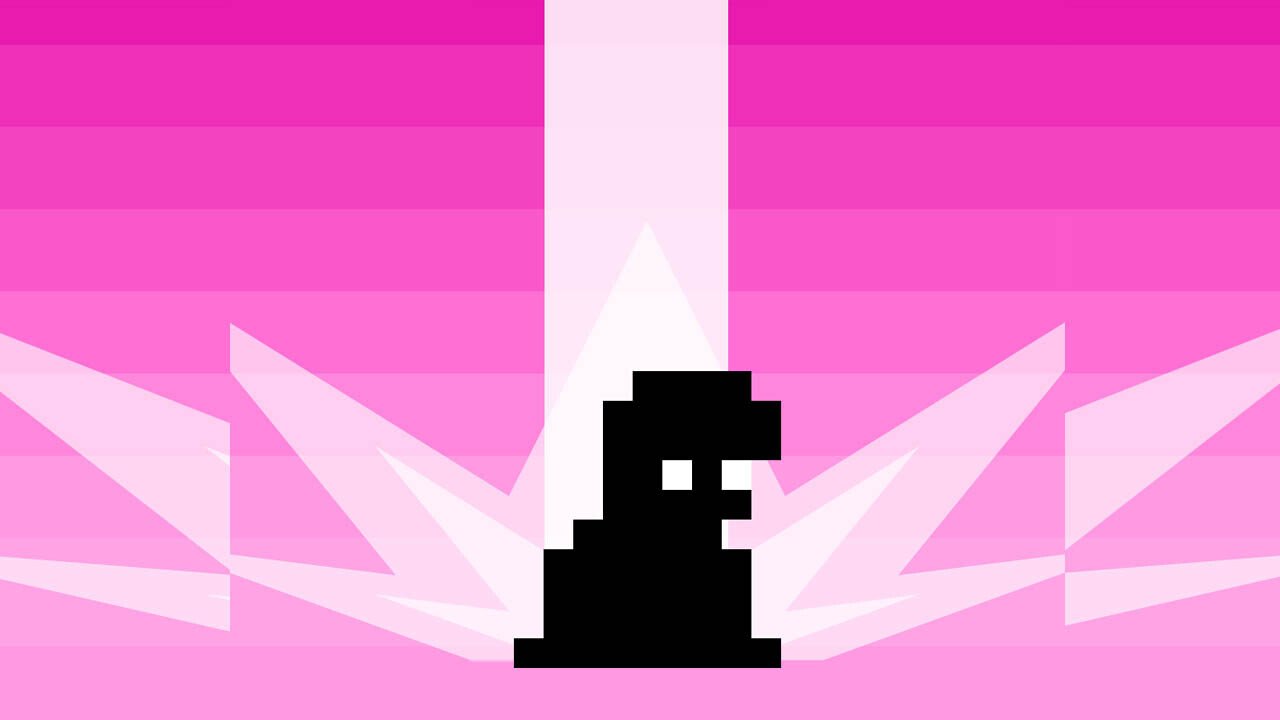Super-hard platformers are a weird brand of nostalgia-laced games. These are some of the hardest games to review; they’re deliberately designed to infuriate players. Talking about technical merits and challenge is somewhat difficult when the game is made to mock and infuriate the player, even outright lying to you at times (if I wanted a game to lie to me, I’d play Heavy Rain). Michael Todd’s indie platformer, Electronic Super Joy, while frustratingly hard at times, was still interesting to play, if only because its changing structure and over-the-top visuals were engaging.
The plot of the game is largely immaterial and receives virtually no attention – something about finding someone who stole your butt, or something. It’s an excuse to travel between three worlds of increasingly hard, psychedelic levels, leaping platforms and bizarre enemies, all bent on killing you in tricky and devious combinations.

The graphics are monochrome pixel-art, with every character and solid platform a black silhouette. The backgrounds are a bright, active display of shapes and colours, which contrast the objects you interact with. Some laser beams and explosions are stark white, indicating danger or special objects (portals, collectable stars). It’s actually rather pretty, and there’s never a case where it’s unclear where you can land, especially with how busy the screen could get in later levels.
The music is a mix of dubstep and electronic music composed by Envy, which is sometimes synchronized with the level’s movement or actions. This kind of music is known for being repetitive and tedious, but I found most of it to be good and well suited to its levels. They’re lively tunes, reflecting the somewhat surreal pacing and layout you’re faced with. Considering you’ll be spending a lot of time repeating several actions in the game, it might as well look and sound good. The sound effects are decent, too, and blend well with the sound effects.

Make no mistake; this is the kind of game where you WILL die, and you will have to respawn. Besides the arrow keys, there are two main buttons you use, one to jump, and one to perform an offensive ‘smash’ in midair that crushes anything beneath you and immediately drops you down onto the surface below you. The latter’s functionality has multiple uses, allowing you to drop through dangerous lasers unharmed, destroy missiles and enemies, and immediately stop forward momentum and land (or, if you’re over a pit, instantly die). There are a few other actions you can make in specific levels, but they come and go – taken away at seemingly whimsical points in a World, but always with sufficient warning. Boss battles are often multi-stage affairs and require you to collect objects, or chase/be chased through levels while the boss fires at you.
Unlike Super Meat Boy, this game doesn’t let you skip levels if one stumps you; you have to play every level to progress, in order. This can get frustrating, especially with the game’s rather cavalier attitude; rules will sometimes change between levels, and sometimes even within a level. Difficulty can therefore be somewhat unpredictable, with certain levels markedly more difficult than others. The dancing NPCs that inform you of changes to your powers can even mislead you, trapping you or causing you to miss collectables. The game requires thought to progress, and strategies are needed – I found Meat Boy levels had multiple solutions, while Electronic Super Joy usually does not.

In addition, there’s fewer extras in ESJ, with only four extra levels in World Four (unlocked only by collecting all the stars, which requires completing the level before they register for you). Aside from the stars, that’s it. The levels are of decent length, even without respawns, and often require some thought as well as trial and error to traverse.
All this said, the difficulty is manageable. I committed a cardinal sin of platformers, and used my keyboard, and found the controls were precise enough to manage everything. Your avatar can execute precise changes in direction quickly enough that nothing is insurmountable, you can reliably predict where you’ll land in most cases, and enemy hit-boxes are consistent.

It ran rather smoothly for me, overall, but there was one level where the checkpoints would slow the entire game to the point where things would stop; jumping or moving while this was happening would cause you to run into obstacles or pits without warning. Waiting it out works, and if you stand still it will eventually return to normal without a loss of time, but it takes a while to right itself and doesn’t always get easier when you reload. Aside from that one point—and a laser that flashed by so quickly it was hard to gauge where to stand to avoid it—no problems on that account.
The game is only $7.99; at that price, it’s a solid game. It took me about ten hours to beat, and there’s quite a few achievements left (not dying in levels, specific challenges in certain stages, collecting stars for the final four levels). It’s got more depth than some of the free browser super-hard platformers out there and is considerably more fun. Give it a shot.






